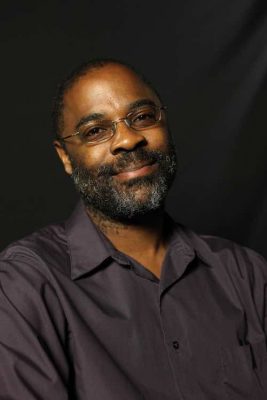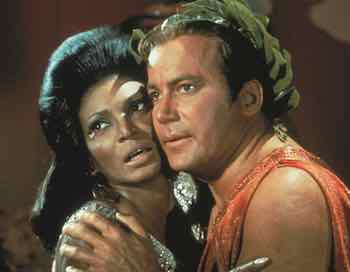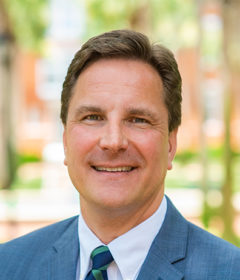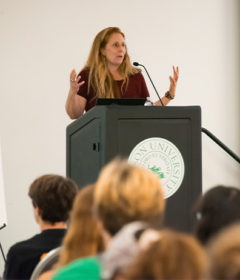Summoning Captain Kirk and Uhura
Editor’s note: In recognition of Black History Month, we celebrate the work of Professor Harry Price, PhD. The full length of this article will appear in the Spring 2021 issue of Stetson University Magazine, to be published in April.

When Harry Price, PhD, associate professor of chemistry and director of biochemistry, was growing up in Chicago in the late 1960s and early ’70s, he watched with wide-eyed astonishment as humankind was boldly going where no one had gone before.
“I was always curious about things,” Price said on Zoom. “Science never came easy to me, but I was really into it because of — and this sounds cliché — watching ‘Star Trek.’ The other thing that was transformative was the fact we were going to the moon every day. It seemed like every week there was something going on with the Apollo program.”
While “Star Trek,” the landmark science-fiction television series, was spurring Price’s interest in science, the show also boldly went, in cultural terms, where few had previously gone. In the 1960s, racial diversity on prime-time TV was as rare as a round-eared Vulcan, but “Star Trek” was the exception.
And then there was that kiss.
“I remember my sister and I watching an episode of ‘Star Trek’ on this old, rickety couch in the basement,” Price continued. “There was an episode where these omnipotent beings took control of Kirk and Uhura and the landing party. They had these little collars on them or whatever, and they would control their actions. And they made Uhura (an African American character portrayed by Nichelle Nichols) and Kirk (the white starship captain portrayed by William Shatner) come together and kiss. My sister and I were like ‘Whaaattttt!? What did we just see?!’”
What they saw was one of the first interracial kisses on TV, a scene that surprised and even shocked the nation. Such reactions would later become quite familiar to Price as he pursued his higher education.
Price’s “Star Trek” memories surfaced after he moderated an online open forum last June about Stetson’s 2020 Campus Climate Survey Report, which examined the lived experiences of students, faculty and staff on the DeLand campus and at the College of Law in Gulfport.

The report revealed that Stetson had improved “beyond expectations” in some areas during the four years since a previous survey, but that the university had struggled in other areas, particularly regarding issues of diversity and inclusion.
During the forum, Stetson President Christopher F. Roellke, PhD, revealed he will create a “very high-level President’s Advisory Council on Diversity and Inclusion” and will commit funding over the next three years to aid such efforts at the university.
As a result, while the pandemic has dissipated what Price affectionately calls the “barbershop” atmosphere of his office — where students loved to hang out and chat or listen to the ever-present blues or reggae music playing in the background — the chemistry professor remains busy both in and out of the classroom.
Price continues to serve as program coordinator for biochemistry in the university’s chemistry and biochemistry department, and as faculty director of the Brown Center for Faculty Innovation and Excellence. Also, he has taken on a new role: an appointed advisory position on Roellke’s administrative cabinet.
“As faculty, service is part of our portfolio,” noted Price, who earned his bachelor’s degree in biological science from the University of Illinois at Chicago in 1986 and his doctorate in chemistry there in 1991. After completing a post-doctoral fellowship at Johns Hopkins University, where he researched African sleeping sickness in humans and related diseases in livestock, he taught at the University of Central Florida before coming to Stetson in 2001.
He’s busy, sure. Plus, he brings uncommon perspective to the role — a view that clearly could help the university going forward. Yet, Price deflects special attention.
“A number of faculty are doing a whole lot more than I’m doing,” he said. “I want to contribute outside of the classroom because I have a lot of experience. If I’m asked to do something and I feel like I can make a legitimate contribution, then I will do that. Faculty are so much more than just teachers.”
–Rick de Yampert



